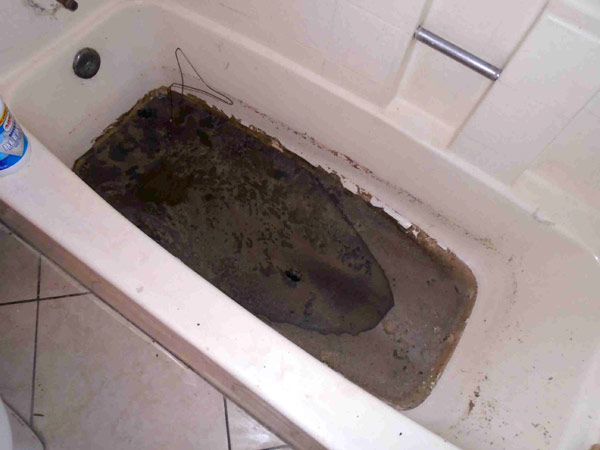Unpacking the Causes of Effluent in the Bathtub
Unpacking the Causes of Effluent in the Bathtub
Blog Article
How do you actually feel in regards to Why is Sewage Backing Up Into My Bathtub??

Sewage backup in the tub can be a traumatic and unhygienic trouble for any type of property owner. Not just is it inconvenient, but it also poses serious wellness threats and indicates underlying concerns with the plumbing system. Understanding why sewage is showing up through the tub is vital for taking ideal action to attend to the problem successfully.
Intro to the Concern
Common Factors for Sewage Back-up
Obstructions in the Drain Line
Among one of the most usual causes of sewage back-up is a blockage in the sewage system line. This can occur due to the buildup of debris, oil, or international things in the pipelines, stopping proper flow and triggering sewage to support into your bath tub.
Tree Root Intrusion
Tree roots seeking wetness and nutrients can penetrate drain lines through tiny splits or joints. Gradually, these roots can grow and increase, triggering significant damages to the pipes and leading to sewage backup concerns.
Recognizing the Trouble
When sewer draws back up into the tub, it's a clear indicator of a problem with the water drainage system. The wastewater that should be moving far from your home is instead locating its way back into your home, which can bring about considerable damages and health hazards.
Possible Causes
Several variables can add to sewage back-up in the bathtub. From clogs in the sewer line to issues with the plumbing framework, identifying the origin is important for discovering a remedy.
Aging Framework
Older homes might have dated plumbing systems that are extra prone to corrosion, cracks, and degeneration. As pipes age, they become a lot more prone to leaks and clogs, enhancing the chance of sewage back-up events.
Heavy Rainfall or Flooding
Throughout durations of heavy rainfall or flooding, the sewer system may end up being overloaded with excess water, causing back-ups and overflows. This can cause sewer backing up into bathtubs and other fixtures inside the home.
Indicators of Sewage Backup
Foul Odors
Undesirable smells rising from drains pipes or components, specifically in the restroom, may indicate sewage backup issues. These odors are typically strong and persistent, signifying an issue that requires prompt attention.
Slow Draining Fixtures
Bath tubs, sinks, and commodes that drain pipes slowly or otherwise in all could be experiencing sewer backup. If several components are affected all at once, it's most likely that the concern originates from a typical factor, such as the major drain line.
Gurgling Sounds
Strange gurgling or bubbling noises originating from drains when water is running elsewhere in your home are a measure of air entraped in the plumbing system. This air buildup can result from sewer backup and need to be checked out without delay.
Wellness Threats Connected With Sewer Backup
Contamination of Supply Of Water
Sewage back-up can infect the water system in your home, presenting a significant health risk to you and your family members. Exposure to infected water can result in stomach concerns, skin infections, and other diseases.
Mold and mildew Development
Dampness from sewage backup can produce ideal conditions for mold growth in your house. Mold spores can aggravate breathing problems and cause allergies in delicate people, making punctual clean-up crucial.
Spread of Condition
Sewage consists of damaging bacteria, infections, and bloodsuckers that can cause a series of diseases, consisting of hepatitis, cholera, and gastroenteritis. Coming into contact with sewage or infected surface areas puts you in jeopardy of infection.
Cleaning Up After Sewer Backup
Sanitation Procedures
Extensively sanitize and sanitize influenced locations after sewage back-up to remove dangerous microorganisms and avoid mold development. Use appropriate cleaning items and safety gear to make sure safe and efficient cleanup.
Repair of Impacted Areas
Repair any kind of damage to flooring, walls, or components caused by sewer backup. Depending on the degree of the damage, you might require to replace carpets, drywall, or other products to recover your home to its pre-loss problem.
Immediate Actions to Take
Turning Off Water System
In case of sewage backup, it's important to turn off the supply of water to stop more contamination and damages. Situate the major water shutoff valve in your home and shut it off until the problem can be fixed.
Calling a Specialist Plumber
Managing sewage backup is not a DIY work. Contact a licensed plumber with experience in dealing with sewage-related concerns to examine the scenario and perform necessary repairs or clean-ups.
Staying Clear Of Contact with Contaminated Water
Until the sewer back-up is solved, prevent contact with contaminated water to prevent the spread of germs and virus. Put on safety gear if you should remain in the affected area and wash your hands thoroughly later.
Preventive Measures
Normal Maintenance of Drain Lines
Schedule regular evaluations and upkeep of your sewer lines to determine and resolve prospective issues before they intensify into significant troubles. This can include cleaning out particles, evaluating for tree root breach, and fixing any type of broken pipelines.
Installing Backwater Valves
Consider setting up backwater valves in your plumbing system to avoid sewage from flowing back right into your home during durations of heavy rainfall or flooding. These shutoffs instantly close when water draws back up, safeguarding your home from contamination.
Proper Disposal of Home Waste
Stay clear of flushing anything apart from bathroom tissue and human waste down the toilet to prevent obstructions and obstructions in the sewer line. Dispose of oil, oil, and other house chemicals properly to reduce the threat of plumbing issues.
Why is there sewage coming up from my bathtub?
These gas fumes, like hydrogen sulfide – the gas that leaves a rotten egg smell in its wake and is highly flammable and toxic – can be hazardous to your health. Sewage poses major health risks as it contains harmful bacteria and microorganisms that can be dangerous if exposed to them.
Sewage cleanup should be considered an emergency.
So, why is there sewage coming up from your bathroom? There are several common causes of a sewage backup.
The most common reason for sewage coming up through your bathroom is a clogged sewer line. All plumbing in your bathroom connects to a single drain pipe that leads to the sewer line under your house. This drain line carries all wastewater and sewage away from your home to the city’s sewer system.
When the sewer line becomes clogged or blocked, wastewater has nowhere to go but back toward your house. This results in sewage coming up through your drains, often starting with your tub or shower.
Another culprit may be the sewage ejector pump, which is used when a bathroom, laundry room or any other type of plumbing fixture is located below the level of the main sewer or septic line flowing from the house. Most commonly, ejector pumps are used in homes with basement bathrooms or laundry rooms.
When you experience sewage coming up through your bathtub, it’s always best to contact a professional. Attempts to fix a clogged sewer line without experience often lead to more plumbing damage.
Make sure that no one enters the affected area, and open as many windows as possible. Pre-treat the flooded area with small splashes of chlorine bleach. Wear protection gear like rubber gloves, a mask, and water-resistant coveralls.
https://www.shawlocal.com/the-herald-news/sponsored/2022/08/17/omega-plumbing-10199038/

We were shown that editorial on What to Do if Sewage Starts Coming Up Through Your Bathtub from an acquaintance on a different website. Are you aware of anybody else who is curious about ? Do not hesitate to promote it. Thanks a lot for your time spent reading it.
Book Your Installation
Report this page